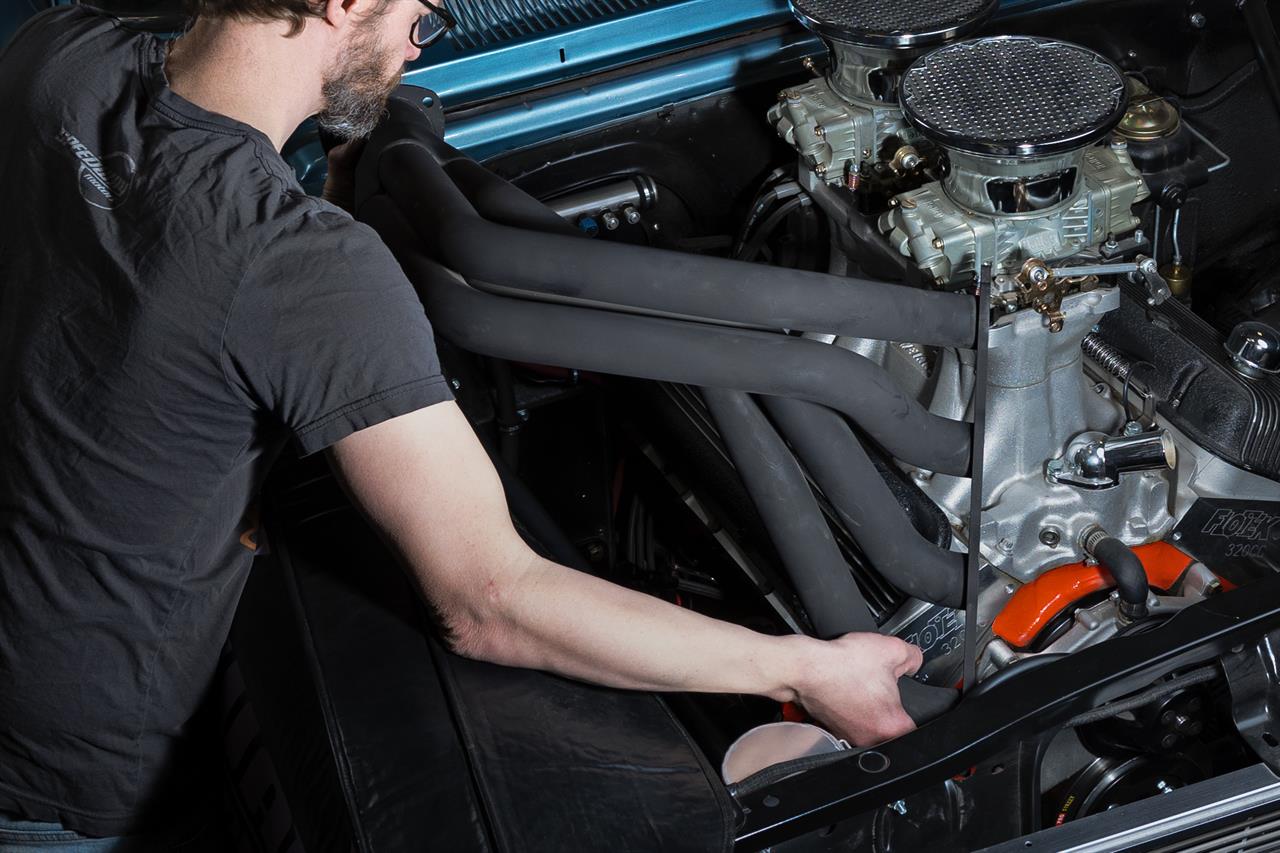Choosing the Right Exhaust
Let's face it; most factory exhaust systems are heavy, restrictive, and worst of all, quiet. Not to mention the factory exhaust manifolds rarely fit your hot rod's chassis or engine compartment. You certainly do not want to put that brand new crate engine in your project and attempt to use any of the stock exhaust bits that came with it do you? Even if your crate engine arrives sans exhaust headers you are still going to have to figure out what you'll need to get your spent exhaust gases from the engine to the rear of your ride. This article provides a brief overview of what you'll need to build your hot rod's new exhaust system with links to expanded buyer's guide content to really help you with your decision making process.

Where to Start When Planning Your Exhaust System?

It makes sense to start at the front and work our way back, right? In that case, headers it is! Nearly all stock manifolds are cast iron, and have casting remnants remaining in the exhaust pathway. This causes turbulence and restriction. Most of the nearly 800 different headers Speedway Motors offers are a tubular steel design, ensuring maximum flow with minimal interruption. Some are long, some are short, and some are center dump style. It all depends on your application, as well as your preference. Most stock applications below 350ci can be best served by a 1-5/8-inch primary tube header, where a higher power application will inevitably need a larger tube, anywhere from 1-3/4- to 1-7/8-inch. We also offer specialty manifolds like LS swap cast iron turbo applications and much more!

You have a lot of choices when it comes to headers, we have made that quite clear. However, we are not trying to muddy the waters here, but instead help you realize that there are many options including primary tube size, short or long tube header length, coated or painted (or bare!), fully welded or kit form, and much more. Our exhaust header buyer's guide should be your first stop in configuring your hot rod's new exhaust system.
What Size Exhaust Pipe Should I Use?

The quick and easy way to choose what diameter pipe you will need from the headers to the mufflers is to go back to the old rule of thumb, that for every 100 horsepower, 1 inch of total pipe diameter is needed across the system. For example, a 500 horsepower engine would require a 5-inch exhaust pipe (split into dual exhaust that means a 2-1/2-inch diameter pipe for each engine bank). This, of course, is a rough estimate, and there are several complex mathematical formulas to help you discover the "perfect" size pipe to use for your hot rod project. There are also several online calculators you can utilize, like this one. Simply input the horsepower figure of your engine, the number of exhaust pipes you are running to the rear of the car, and hit "calculate." The calculator will do the math for you and tell you the minimum recommended pipe diameter for your application. Then you can shop our exhaust pipe kits and add the system you want to your cart. You can learn a bit more about exhaust pipe sizing with our exhaust pipe sizing toolbox guide on the subject too.
How Do I Know What Mufflers to Buy?

Your choice of mufflers is as much about performance as sound. Do you want a low growl, or do you want to wake up the neighbors on Sunday? There are multiple options available to you. Flowmaster is a popular option we offer and you can learn about their different models and what to expect sound wise in our Flowmaster muffler guide, which even has a sound clip! You can click on the chart to expand it and evaluate what model best applies to your specific needs. We stock several great brands including Dynatech, Moroso, Dougs, and our own in-house Speedway brand.

Our all encompassing performance muffler buyer's guide is another great piece on the Toolbox that really drills down through many of our muffler offerings and the types of muffler designs we carry, including turbo, glasspack, chambered mufflers, and more. We think it is a great resource and hope you will too!






